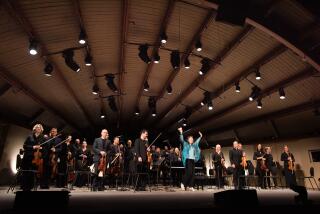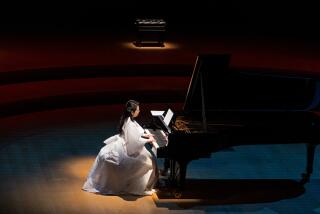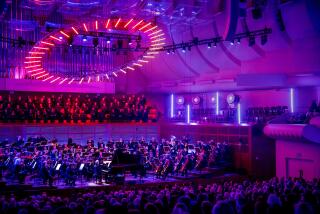Harmonious Diversity in Piano Spheres Recital
- Share via
There was a healthy eclecticism to Susan Svrcek’s Piano Spheres recital Tuesday, an active curiosity about the instrument, ordered with taste and sustained with technical flair. Indeed, those are characteristics of the whole series and once again made the Neighborhood Church of Pasadena a place to be for must-hear music-making.
The second half of her program was given over to Frederick Lesemann’s 1980 Concerto for Piano and Electronic Tape, itself robustly multifarious. Lesemann deals creatively with the problems of integrating live performance with prerecorded sounds, opting for practical and musical solutions rather than technological ones. He also makes his poly-stylistic forays cohere, through complex but ear-friendly harmonic and intervallic relationships.
Svrcek played the roiling outer movements with tautly accented rhythmic drive. The slow movement, with its latent electronic rumbles, is most distinctive, and Svrcek dropped in her part with a sure ear for apposite sonority.
*
The three-part first half balanced the concerto nicely. It too had an atmospheric, proportionally notated piece at its center, Edison Denisov’s 1974 “Signes en blanc,” a fluidly chiming exercise in luminous quiescence. To open there was Nikolai Roslavets’ Sonata No. 5 from 1923, an organically evolved work of great expressive power, something like Scriabin without the ooze.
Most affecting of all was Busoni’s “Fantasia nach Johann Sebastian Bach,” a deeply personal paraphrase that does greater justice to its source material than Busoni’s more literal Bach arrangements. Svrcek delivered it all with probing conviction, attention to detail and a compelling sense of dramatic movement.
More to Read
The biggest entertainment stories
Get our big stories about Hollywood, film, television, music, arts, culture and more right in your inbox as soon as they publish.
You may occasionally receive promotional content from the Los Angeles Times.










